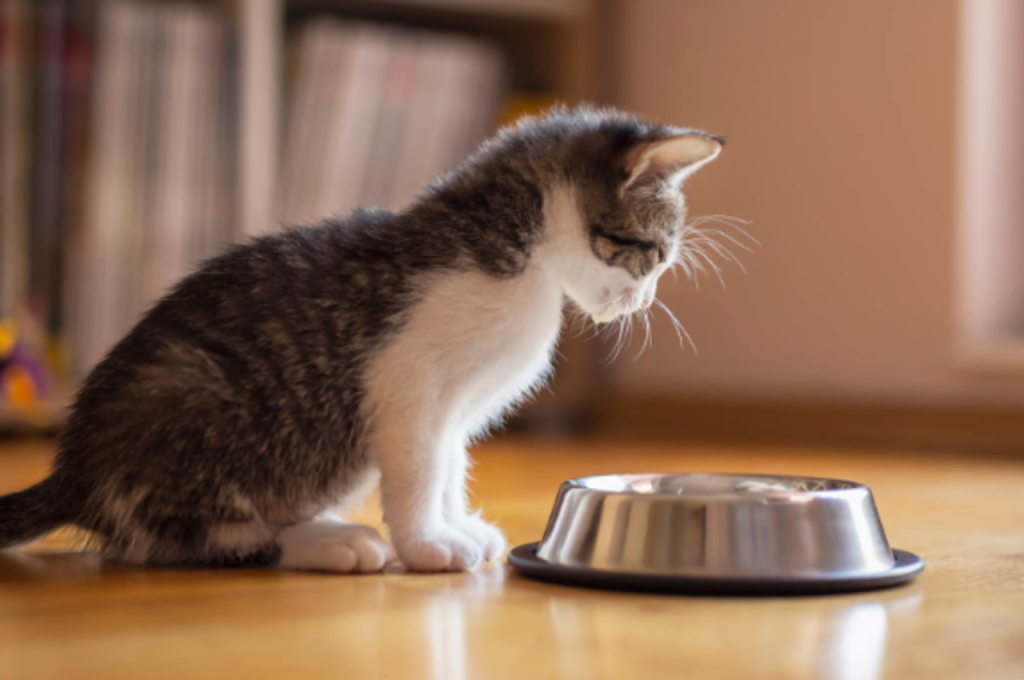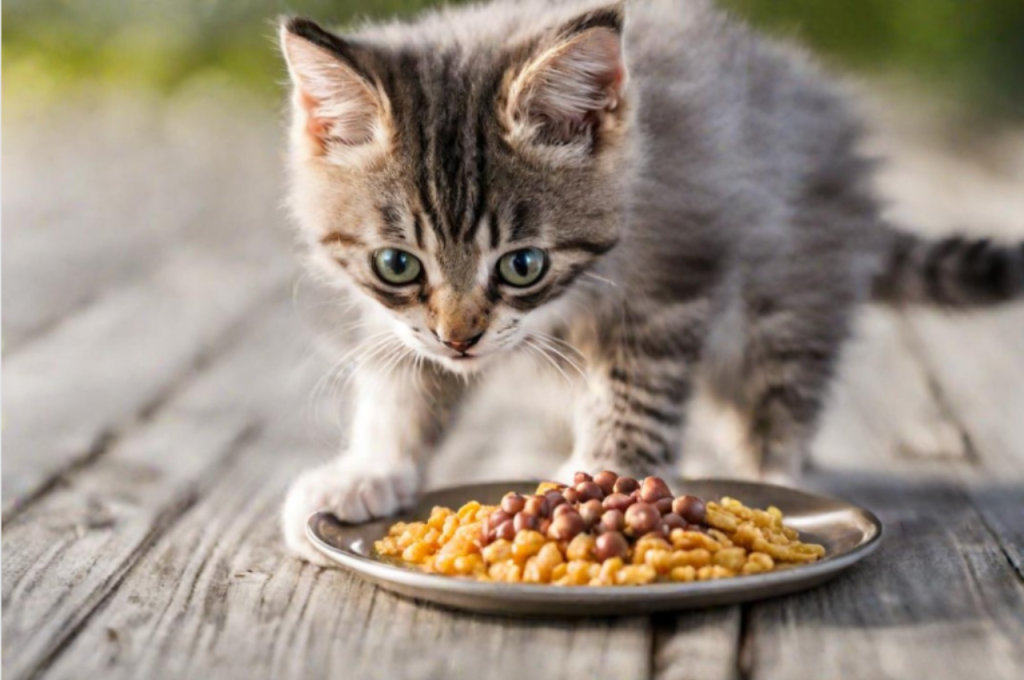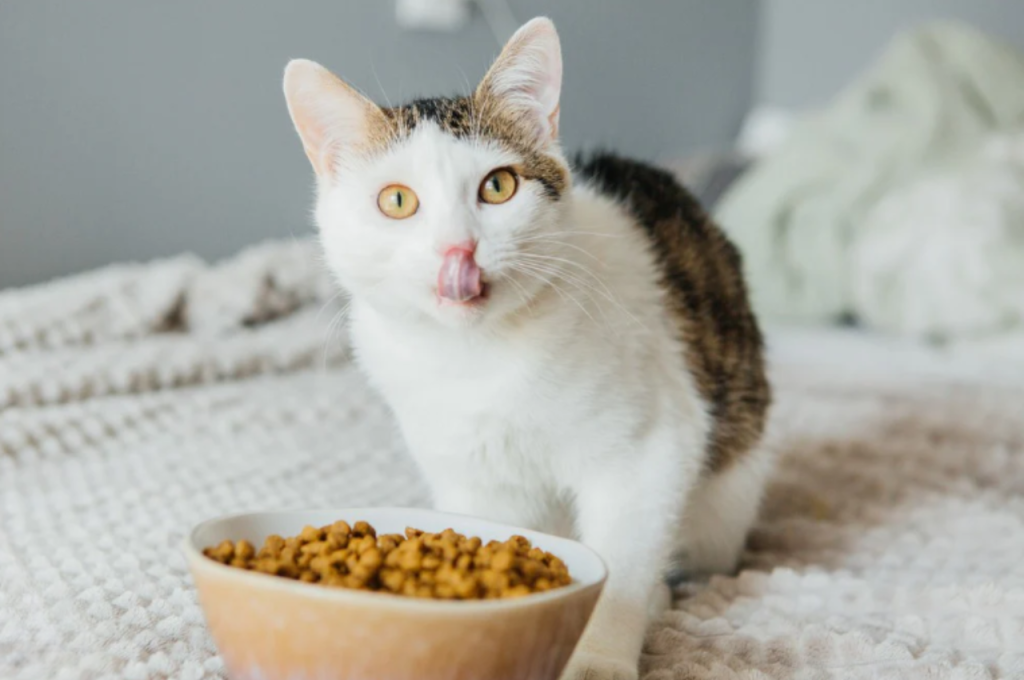Cats generally prefer food at room temperature or slightly warm over cold food. This preference is due to their instinctual behavior and physiology, which is more receptive to warmer meals.
Providing your cat with warm or room temperature food can enhance their eating experience and digestion. It is important to consider your cat’s individual preferences and adjust their food temperature accordingly. By offering food that is closer to their natural body temperature, you can ensure that your feline friend enjoys their meals and stays healthy.
Understanding your cat’s preference for warm or room-temperature food can contribute to their overall well-being and satisfaction with their meals.
Understanding Cats’ Taste Preferences
Understanding cats’ taste preferences is crucial for providing them with a diet they enjoy and thrive on. Cats are obligate carnivores, which means they require a diet primarily consisting of animal-based proteins.

Cats are Obligate Carnivores
Cats’ taste preferences are influenced by their evolutionary history as obligate carnivores. Cats have taste buds that are less sensitive to sweetness compared to humans, as their diets in the wild primarily consist of meat.
Preference for Warm Food
Cats tend to prefer slightly warm food because it enhances the aroma and taste of their meal. Serving their food warm can make it more appealing to their senses, mimicking freshly hunted prey.
Preference for Fresh Food
Cats have a strong preference for fresh food as it retains more nutrients and flavors compared to food that has been sitting out for an extended period. Offering fresh food can help stimulate their appetite and ensure they are getting the best nutrition.
The Importance of Temperature in Cat Food
When it comes to keeping our feline friends happy and healthy, the temperature of their food might not be the first thing that comes to mind. However, the temperature at which you serve your cat’s food can have a significant impact on their eating experience and overall well-being. Here’s why temperature matters when it comes to cat food:
Effect of Temperature On Palatability
Cats prefer warmer food due to enhanced flavor and aroma. Cold food may be less appealing to them.
Impact of Cold Food On Digestion
Cold food can slow down a cat’s digestion, leading to discomfort and potential issues.
Benefits of Warm Food for Cats
Feeding your cat warmer food may aid in digestion and reduce the likelihood of digestive issues.
Factors Affecting Cats’ Food Temperature Preferences
The temperature of food can greatly influence a cat’s dining experience. Just like humans, cats have their preferences when it comes to the temperature of their food. Understanding these preferences can help ensure that your feline friend enjoys their meals to the fullest. Several factors can affect a cat’s food temperature preferences, including age and developmental stage, environment and climate, and health conditions.
Age and Developmental Stage
Cats’ food temperature preferences can be influenced by their age and developmental stage. Kittens, for example, may prefer warm food as it reminds them of their mother’s milk, which is naturally warm. As they grow older, cats may become more adaptable to different food temperatures. However, senior cats may have more sensitive teeth and gums and may prefer softer, room-temperature food.
Environment and Climate
The environment and climate in which a cat lives can also play a role in their food temperature preferences. For cats living in colder climates, warm food can provide a comforting and soothing sensation. On the other hand, in warmer climates, cats may prefer cooler food to help them cool down. Paying attention to your cat’s surroundings can give you insights into their food temperature preferences.
Health Conditions
A cat’s health conditions can affect their food temperature preferences. Cats with dental issues or oral sensitivities may prefer softer foods that are closer to room temperature. Additionally, cats with certain health conditions, such as a fever or an upset stomach, may show a decreased appetite and may prefer cooler or warmer food depending on their specific condition.
Tips for Serving Food At The Right Temperature
When it comes to feeding cats, serving food at the right temperature is crucial for their enjoyment and health. Understanding whether cats prefer warm or cold food can help ensure that your feline friend’s meals are a hit every time. Here are some helpful tips for serving cat food at the right temperature.

Proper Food Storage
Storing cat food properly is the first step in serving the right temperature. Dry cat food should be stored in a cool, dry place away from direct sunlight. On the other hand, wet cat food should be refrigerated promptly after opening to maintain its freshness and prevent spoilage.
Warming Techniques
Warming your cat’s food can enhance its aroma and make it more palatable. To warm wet cat food, place the sealed can or pouch in a bowl of warm water for a few minutes. Avoid using the microwave, as it can create hot spots that may burn your cat’s mouth. For dry food, add a small amount of warm water to create a moist and appealing texture.
Monitoring Food Temperature
Monitor the temperature of your cat’s food to ensure it is safe for consumption. Use a food thermometer to check the temperature of heated food, aiming for a gentle warmth rather than hot. Additionally, always discard any uneaten food to prevent bacterial growth, especially in the case of wet food.
Transitioning Cats to Different Food Temperatures
Cats are known for their particular preferences when it comes to food temperatures. Some cats enjoy their meals warm, while others prefer it cold. Transitioning a cat to a different food temperature can be a gradual process that requires patience and understanding of your feline friend’s behavior. Here are some tips to help you make the transition smooth and stress-free for your cat.
Gradual Introductions
When transitioning your cat to a different food temperature, it’s essential to introduce the new temperature gradually. Abrupt temperature changes can lead to digestive upset and refusal to eat. Start by mixing a small amount of the new temperature with the current food and gradually increase the proportion over several days.
Mixing Temperatures
Mixing different temperatures of food can help your cat acclimate to the change. You can gradually mix the warm and cold food to create a blend of temperatures that your cat can slowly get accustomed to. This method can ease the transition and prevent your cat from rejecting the new temperature altogether.
Observe and Adjust
Keep a close eye on your cat’s behavior and appetite during the transition process. Observe how your cat responds to the new food temperature and be prepared to make adjustments as needed. If your cat shows aversion to the new temperature, consider slowing down the transition process or offering a mix of both temperatures for a longer period.
Common Misconceptions About Cats’ Food Preferences
Cats might prefer room-temperature food over cold or warm dishes, as their taste is inclined towards freshness. Providing a balance between temperature and texture can help in offering the best dining experience for your feline companion. Understanding their preferences is key to keeping them happy and well-fed.
Cold Food Equals Refreshing
Contrary to popular belief, cold food does not necessarily mean it’s more refreshing for cats. While humans may prefer a chilled beverage or a cold meal on a hot day, cats have different taste sensations and a keen sense of smell. They don’t perceive temperature in the same way we do. Cats rely heavily on the aroma and flavor of their food, which is why they often prefer it at room temperature. Although some may enjoy a chilled treat occasionally, it is not a determinant of their preference for cold food in general.
All Cats Have The Same Preferences
It’s a common misconception that all cats have the same food preferences. Just like humans, cats have their unique tastes and preferences. Some may prefer their food warmed up slightly, while others may enjoy it straight from the can or bag. This can vary based on factors such as age, breed, and individual preferences. Cats are known for their finicky nature, and what one cat may love, another may turn their nose up at. It’s essential to pay attention to your cat’s cues and adjust their food temperature accordingly to keep them satisfied.
No Preference for Temperature in Cats
Despite our inclination to assume that cats have a preference for a specific food temperature, there is no scientific evidence to support this claim. Cats are biologically programmed to tolerate and digest both warm and cold food. Their wild ancestors often feed on prey that may range in temperature, so their digestive system is adaptable to various food temperatures. The more crucial factor for cats is the texture, smell, and taste of the food, rather than its temperature. So, it’s important to focus on the quality and palatability of their meals rather than worrying too much about serving them at a specific temperature.

Conclusion
Ultimately, the temperature of cat food may not be a major concern for most feline friends. While some cats may prefer warmer food, others may not mind it being colder. Regardless, it is important to ensure that the food is safe and fresh for your cat’s consumption.
Trust your instincts and observe your cat’s preferences to provide the most suitable food temperature for their enjoyment. Remember, every cat is unique, so it’s always worth experimenting to see what they prefer.
